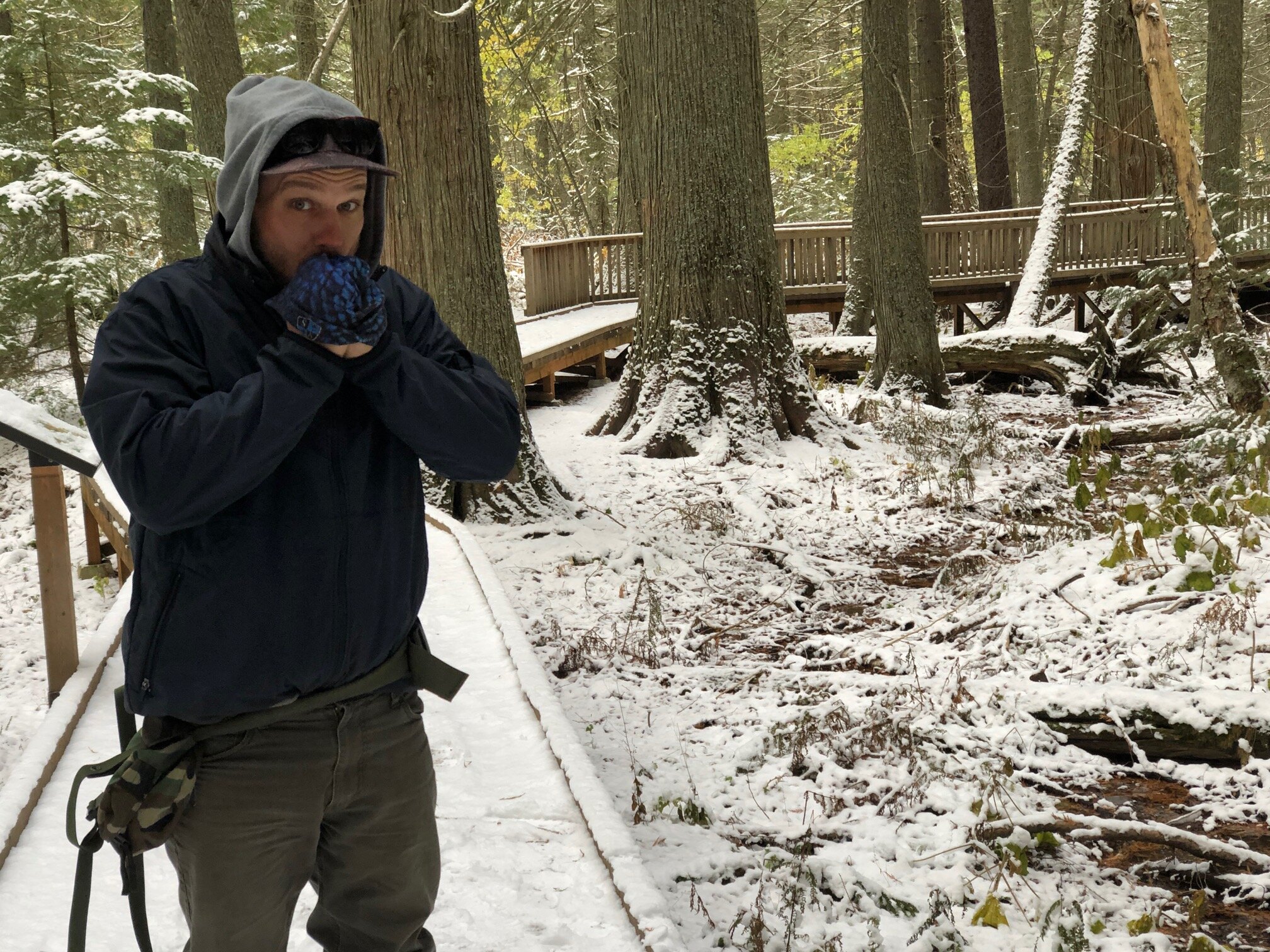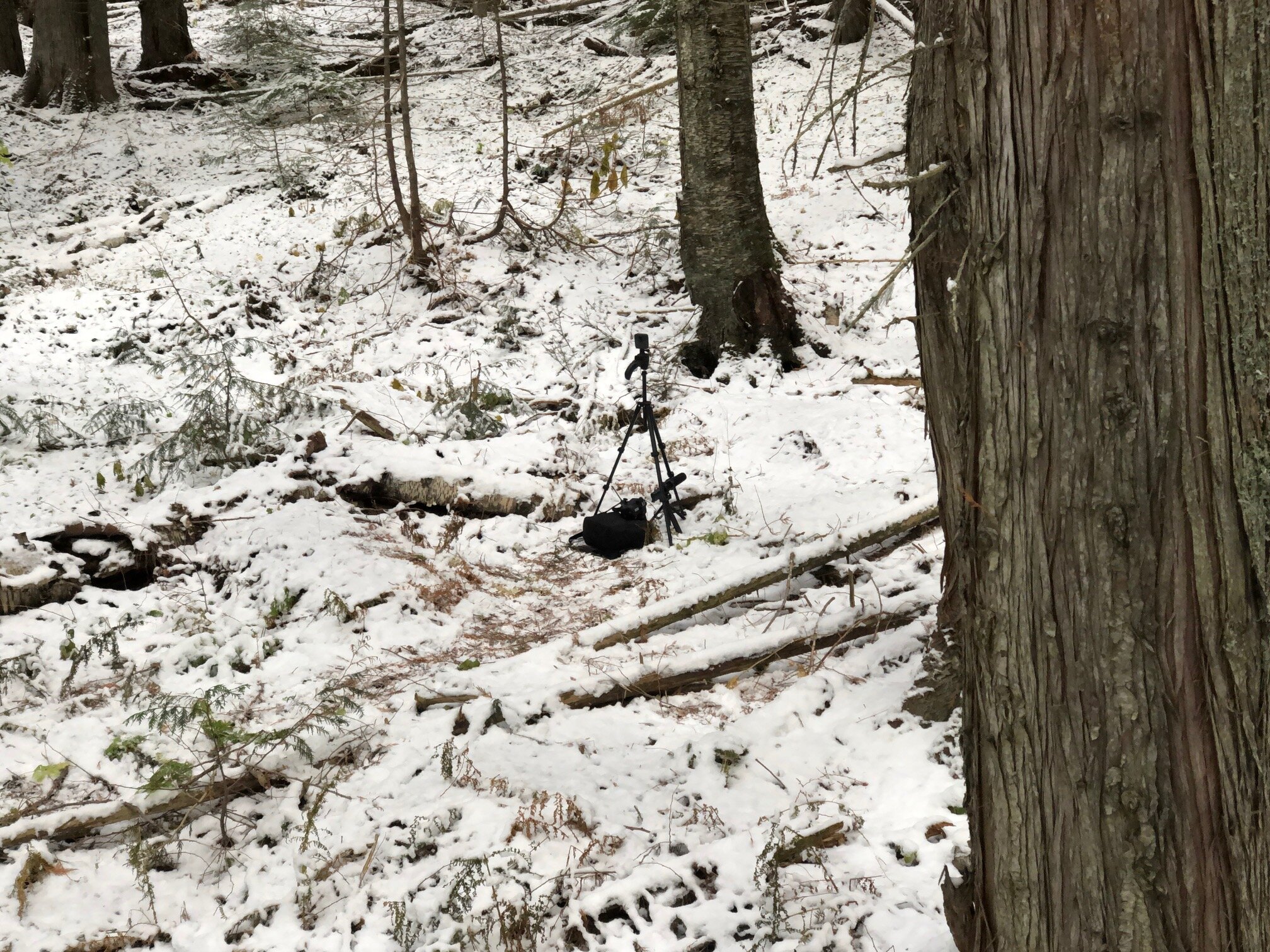Forever Glacier 360: The Old Growth Forest of Lake McDonald and Avalanche Creek
Much of the old growth forest habitat in Glacier National Park resides along Lake McDonald, McDonald Creek and Avalanche Creek. Millions pass through it every year on the way to the Going-to-the-Sun Road and Logan Pass— for the Tolkien fans out there, it is like Middle Earth’s dark and damp Lothlórien, compared to the airy, alpine Rivendell that is Logan Pass. Lots of different animals and forest elves inhabit these areas seasonally, but the exhibit highlights big cats like mountain lions and Canada lynxes and the ubiquitous black bears, who can scavenge, forage and hunt quite silently on the soft duff of fallen needles. Certain small mammals reside only in ancient forests, like flying squirrels, pine martens and fishers.
Trail of the Cedars
“Glacier National Park is the most southern band of the temperate interior rainforest which extends north into parts of British Columbia. When the ancient volcano Mount Mazama (Crater Lake) blew up 8000 years ago, ash from it landed on north-facing slopes and in the McDonald valley, where the majority of old growth in the Park exists today. Ash is found 8-18 inches underneath the soil and absorbs and releases water slowly helping to keep the area more moist than most of this region. This interior forest influences wet weather systems through evapotranspiration. This evaporation is from soil and plant surfaces as well as from transpiration of water from plants, and results in higher than average precipitation in the form of rain and snow.” – Ben Polley, Forever Glacier: Old Growth Forest Habitat Description
More than a century of human fire suppression means these forests have stayed virgin and untouched for longer than they otherwise might have. Hundreds of years of decomposing vegetable matter blankets the ground, making it eerily quiet even in mid-summer when hundreds of visitors wander along the boardwalk that runs through the huge cedars. The atmosphere tends to make humans hush as if on sacred ground. On a lightly snowing day in October when almost everyone had gone home, it was unearthly--only the faint rush of nearby Avalanche Creek broke the stillness.
Bundled up against the tranquil cold and blowing on our fingers, Nico and I set up a 180-degree shot of the forest as snow drifted slowly down from the canopy high above, undisturbed by even of hint of breeze. It is difficult to find a wide angle without getting anything man-made in the frame, but we found a spot that would work to which we could easily return. With footage of an undisturbed snow day in the can, shots of the same scene in other seasons would be easier to grab, though we would have to mitigate or work around crowd and road noise. Nico took some point-of-view (POV) shots from the perspective of a pine marten or lynx running along under a cliff.
We moved on a few hundred feet to find Avalanche Creek, a wide, shallow stream that empties out into the nearby McDonald Creek which flows down to Lake McDonald. We were conscious to not leave any human footprints in the fresh snow, for fear of disturbing the shot, so we hopped from log to rock and miraculously avoided falling in.



